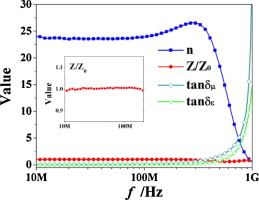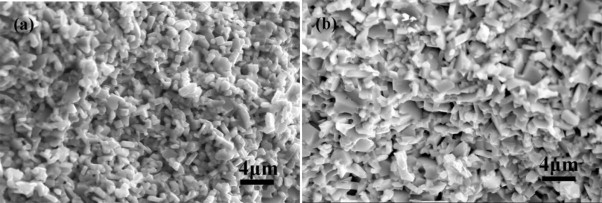Conventional very high frequency (VHF, 30–300 MHz) antennas have large physical dimensions, and it is important to reduce the physical dimensions of VHF antenna without sacrificing performance. A promising method is to use material with higher refraction index as antenna substrate, which can shrink the antenna size by a factor of n. However, using high-permittivity dielectric materials will induce impedance mismatch and increase mutual coupling between components.
Hence, magnetodielectric materials with equal values of permeability and permittivity are desirable. Because the impedance matching between antenna substrate and free space helps alleviate the reflection at interface and reduce the energy trapped in substrate. Furthermore, low loss, including magnetic loss and dielectric loss, is needed to maintain high performance of antennas.
However, it is difficult to achieve material with equal permeability and permittivity, and great efforts have been devoted. Up to now, it is still a challenge to achieve impedance matching material with higher refractive index for VHF. As a result, in order to develop a material with high and equal permeability and permittivity in VHF, the Bi–Co–Ti substituted BaM hexaferrite of Ba0.75Bi0.25Co1.35Ti1.1Fe9.55O19is researched and focused by researchers from the University of Science and Technology Beijing and Institute of Acoustics, Chinese Academy of Sciences.
This research studies the phase formation, sintering behavior, magnetic and dielectric properties of the sintered samples. With the aid of Bi substitution, the sample sintered at 950 °C has matching permeability and permittivity with equal values as high as 24 within a wide frequency range of 10–200 MHz. The high refraction and perfect impedance matching to free space, as well low magnetic and dielectric loss, make it a desirable magnetodielectric material for antenna miniaturization. Compared with conventional high permittivity nonmagnetic material, it can enhance the efficiency and widen the bandwidth of antenna when serving as antenna substrate.

Fig. 1 The material has matching permeability and permittivity with equal values as high as 24 within a wide frequency range of 10–200 MHz (Image by ZHANG).

Fig. 2 Scanning electron microscope photos of the microstructure of the samples sintered at (a) 900 °C and (b) 950 °C (Image by ZHANG).
This research was supported by grants from National Science Foundation of China (51172020), Fundamental Research Funds for the Central Universities (FRF-TP-09-028A) and Beijing Natural Science Foundation (2092020). GUO Dong from the Institute of Acoustics, Chinese Academy of Sciences is grateful for the supports provided by Bairen Programme of Chinese Academy of Sciences.
The research entitled "Magnetodielectric Bi–Co–Ti Substituted M-type Hexaferrite with High and Matching Permeability and Permittivity in Very High Frequency" has been published in Materials Research Bulletin (Vol.48, No.10, October 2013, pp. 3850–3853) with the URL of http://www.sciencedirect.com/science/article/pii/S0025540813004613# online.


